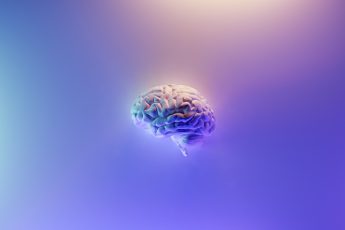Smart scales are very popular
A person’s fitness is determined not only by proper nutrition and training but also by weight control and a desire to improve. It is also crucial that exercise and a special diet positively affect it. That is why smart scales that allow you to monitor essential body parameters (muscle mass, percentage of water, fat, etc.) are prevalent today.

How the smart scales work
The smart scales are based on bioimpedance analysis. For this purpose, the developers placed electrodes on the surface of the device. When the user goes barefoot on the scales, they send an electrical impulse, after the passage of which the results are analyzed through the body.
Smart scales functions
Like regular scales, their “smart” version primarily measures weight. But the additional design elements and the connection of the scales with the phone provide complete information about the body of one or more users. The collected data is stored on a special server and is available to the device’s owners in the application for a tablet or smartphone.
Smart scales provide the following data about the human body:
- Body weight – displayed on the scale and in the app.
- Body mass index is necessary for primary diagnostics of the body condition (degree of obesity, probability of concomitant diseases). It is calculated using a mathematical formula: BMI = weight (kg)/height² (m²). The World Health Organization explains the meaning of this indicator as follows:
16 to 18.5 – slight weight deficit;
18.5 to 24.99 – normal;
25 to 30 – overweight;
30 and over – obesity.

- Muscle mass is a significant indicator that reveals the “fruits of labor” in the gym. But it should be remembered that muscles also include water.
- Total percentage of fat is an indicator that causes increased attention for athletes. In training or dieting, it is important to watch that the body is losing fat, not muscle mass. The job of a smart scale is to help track this process.
- Visceral (internal) fat – requires monitoring to avoid many diseases. This fat covers the internal organs, protects them from damage and acts as a reserve source of energy. But its amount should not exceed 10-15% of the total body fat. Excess internal fat causes fatigue, shortness of breath, cardiovascular problems, diabetes, dementia.
- The percentage of water is a constantly changing parameter of body composition, because a person drinks, breathes, sweats, etc. Normally, the human body contains 50-75% water. Sometimes people think they have lost weight or gained muscle mass, but in reality the change in weight is due to a decrease or increase in the amount of water. It participates in metabolic processes, helps maintain body temperature, and affects performance. Therefore, determining the percentage of water is among the main functions of smart scales.
- Bone mass – shows not the weight of the skeleton, but only the mineral part of the bones. Thus, if the skeleton weighs 7-10 kg, its mineral mass varies: in women – from 2 to 3 kg, in men – from 2.6 to 3.6 kg. The percentage of bone mass indicates the features of the body – “narrow” or “wide” bone. In addition, as we age, bones gradually degenerate, provoking the occurrence of certain diseases (for example, women often face osteoporosis). Avoiding the disease is helped by an active lifestyle.
- Skeletal muscle is a parameter that shows the percentage of muscles attached to the skeleton. Usually their weight is about 40% of body weight, but this figure increases with the amount of exercise.
- Body Protein Level – represents the amount of protein in the body (as a percentage). Protein is the main building material for organs and muscles in the body. Normal body protein ranges from 13 percent to 16 percent, but the higher the better.
- Basal Metabolic Rate – This indicates the number of kilocalories needed to provide the body with normal activity at rest. When the metabolic rate increases, the burning of calories also accelerates. To achieve this effect, you need to increase muscle mass and exercise regularly. This indicator is also taken into account when selecting a diet and exercise regimen to calculate the proper surplus or deficit of calories.
- Metabolic (biological) age is an indicator that shows the age that corresponds to the current metabolism.
Features of using smart scales

Before you buy a smart scale, you should know some of the restrictions and specifics of usage:
- While collecting information, the smart scales pass an electrical impulse through the user’s body. Therefore, it is not recommended to use the device for pregnant women and people with heart problems who use a pacemaker.
- Most models of smart scales are designed for weights from 3 to 180 kg and have a measurement step of 0.1 kg. The error of the device can reach 0.1% (0.1 kg), which is considered acceptable.
- It is not necessary to weigh yourself every day. It is enough to monitor the indicators a couple of times a week. Keep in mind that the results of weighing in the morning are not quite accurate, because after sleep the body is dehydrated. It is better to weigh yourself in the afternoon or evening, and then stick to your chosen time, comparing the information obtained.
- The scales should be set on a hard flat surface. It is recommended to choose a permanent place for them, so you do not have to move the device often.
- It is worth to put a smart scale in a visible place (for example, near the mirror) as a reminder of the need to regularly weigh yourself and watch your figure.
If you can’t bring yourself to get off the chair and go to the gym, then buy a smart scale! They help develop the habit of monitoring weight and body composition and encourage training and self-improvement. Consequently, smart scales can change a person’s attitude toward their health.











